Abstract
PURPOSE
The purpose of this study was to estimate the effects of occlusal stability to identify action mechanisms of mouthguards, known to have a modulatory effect on limb muscle function.
MATERIALS AND METHODS
This study included 20 male subjects to perform the isokinetic muscle tests and the Wingate anaerobic power test on both knee joints under five closed-mouth conditions: without or with 4 types of mouthguards with thickness of 2 mm based on premolar area: (1) full-coverage, (2) anterior partial-coverage, (3) right posterior partial-coverage, and (4) left posterior partial-coverage. The obtained results were subjected to One-way ANOVA with repeated measures, followed by post hoc test of the contrast method (α=.05).
RESULTS
There was no significant difference between the closed position with and without a full-coverage mouthguard in all variables. However, significant differences were observed between with and without a partial-coverage mouthguard in muscular endurance during extension of the left knee, muscular power and endurance during flexion of the right knee. Additionally, significant differences were found between occlusal states with full- and partial-coverage mouthguards in muscular power and endurance during extension of the left knee.
Go to : 
A mouthguard is a protective appliance that effectively prevents the oromaxillofacial region from possible injuries during various physical activities.1,2 It has been shown that mouthguards absorb shocks to protect teeth and periodontal tissues, and also help prevent even more serious trauma, including maxillary fracture or even concussion.3,4
In addition to their protective functions, their effects on certain physical activities followed by wearing properly fabricated mouthguards have attracted the interests of clinicians and researchers.5,6 As a result, many studies have been performed to measure the influence of mouthguards on physical performance, and to maximize physical performance modifying mouthguards by finding their optimal form.7-9 In the sports dentistry field, many researchers have focused on how occlusal changes, such as mandibular shift and increased vertical dimension, or how occlusal stability affects physical performance.10-12 Based on the results of these studies, it was suggested that mouthguards could also be used to aid performance in addition to providing simple protection of oromaxillofacial region.13,14
Stenger et al. first reported the effects of mouthguards on physical performance based on the considerable changes in the head and neck area by repositioning the mandibular condyle, and suggested that mouthguards could be used to enhance athletic performance.15,16 Early researchers, such as, Gelb et al. suggested a strong connection between oromaxillofacial muscles and systemic muscles and also argued that an inappropriate intermaxillary relationship has an undesirable influence on systemic condition, suggesting that proper mandible realignment improves systemic physiology.17,18 To obtain the ideal intermaxillary relationship, they suggested the use of MORA (mandibular orthopedic repositioning appliance).19,20 The studies on the influence on physical performance according to changes in occlusal conditions using MORA have been conducted by several investigators. In particular, Forgione et al. reported an increase in muscular limb strength using MORA,21,22 and Kaufman et al. reported improved muscular strength and balance in athletes after the application of mouthguards or MORA.23,24
However, some studies based on double-blind tests reported inconsistent and non-significant results, and argued that previously reported positive effects of intraoral appliances were due to placebo effects resulting from inadequate experimental designs such as lack of double-blind method.25,26 On the other hand, Abduljabbar et al. in a placebo controlled study found that when a mouthguard was applied in temporomandibular disorder (TMD) patients with loss of vertical dimension in several occlusal conditions, strengths of shoulder and knee joints improved significantly.27 Thus, controversy over the systemic effects of intraoral appliances including mouthguards persists,28 and although many studies supported the positive systemic effects of intraoral appliances, it is difficult to draw a solid conclusion.11,12,27,29,30
Furthermore, systemic effects could be caused by stomatognathic change. However, the issue is poorly understood, although it has been hypothesized that changes in the peripheral proprioceptive input signals in the orofacial region are transmitted to the central nervous system (CNS) via trigeminal nerve, and that the CNS then transfers the altered output signal via spinal nerves and autonomic nerves to the whole body system.31,32 However, this hypothesis has not been proven experimentally. The suggested mechanisms of action of mouthguards on physical performance can be classified by the step of signaling pathway involving 2 steps: of peripheral input related with stomatognathic changes including mandibular position, proprioceptive stimuli and of systemic output related with signal modulation in central nervous system. Of the two, it makes more sense to first identify specific changes in stomatognathic input before addressing the central and autonomic nervous mechanisms involved.33,34 Furthermore, the identification of specific changes in stomatognathic input would make the latter target easier by narrowing down possible action sites in CNS responsible for inputs. Therefore, this study was undertaken to determine whether mouthguards have systemic effects, and to identify occlusal force distributions among changes in peripheral input that may systemically affect physical performance. Accordingly, we measured systemic changes including isokinetic muscle strengths and anaerobic performances under variable conditions with and without full- and partial-coverage mouthguards with the same intermaxillary vertical dimension.
Go to : 
In this study, systemic physical performances were measured under the following five occlusal conditions and then compared: 1) occlusion without any appliance, 2) occlusion with a full-coverage maxillary mouthguard with anteroposteriorly and laterally balanced occlusal contacts, 3) occlusion with an anterior-coverage mouthguard covering the region from the left maxillary canine to the right maxillary canine, 4) occlusion with a left posterior-coverage mouthguard covering the region from the left maxillary first premolar to the most posterior molar of the left maxilla, and 5) occlusion with a right posterior-coverage mouthguard covering the region from the right maxillary first premolar to the most posterior molar of the right maxilla.
The study subjects consisted of 20 undergraduate students from the department of physical education (Kyungpook National University). The inclusion criteria were as follows: normal occlusion and masticatory system, no history of TMD, no missing teeth (except third molars), a male gender, and an age between 20 and 25 years. Mean age was 21.2 ± 1.5, mean height 174.5 ± 4.7 cm, and mean weight was 68.8 ± 5.9 kg. The study protocol was authorized by the clinical experiment evaluation board of Kyungpook University (IRB code: 2012-02-023). In addition, all study subjects were provided with a full explanation of the protocol and written informed consent was also obtained.
We used the conventional impression method with alginate (Selection-J®, Youdent Co., Chiba, Japan) and then performed the bites registration (Imprint Bite®, 3M ESPE., Neuss, Germany) and the facebow transfer (KaVo PROTAR Evo 7®, Kavo Dental GmbH, Riss, Germany) in the intercuspal position (ICP) to mount dental models on an articulator (KaVo PROTAR Evo 7, Kavo Dental GmbH, Riss, Germany). Two points were marked at midpoint of the line connecting the deepest point on the gingival margin of the left canine and the first premolar, respectively, on the mounted maxillary and mandibular models. Based on two points, the intermaxillary vertical distance (VD) of occlusion was measured and then increased by 2 mm by raising the incisal guide pin of the articulator (Fig. 1).
In the given intermaxillary position, maxillary-coverage mouthguards were fabricated using two layers of 3 mm EVA sheets (Bioplast® multicolor-SCHEU-DENTAL GmbH, Iserlohn, Germany), which were heat-compressed using Biostar® (SCHEU-DENTAL GmbH, Iserlohn, Germany) (Fig. 2).
In order to compensate for changes in the vertical dimension by thermal polymerization, mouthguards were repositioned on mounted models and occlusal adjustment was re-performed (Fig. 3). The finished mouthguards were tried in the mouths of subjects and examined for occlusal condition. Then full-coverage mouthguards were carefully re-adjusted to disperse occlusal force anteroposteriorly and laterally. Each subject received two full-coverage mouthguards fabricated in the given intermaxillary position, and then one of the two was randomly selected to be made into three partial-coverage mouthguards - anterior, right posterior, left posterior - by cutting at the interdental area between both canines and first premolars. All mouthguards were fabricated by a single experienced dental specialist.
Isokinetic muscle strength and anaerobic performance of the knee joint were measured which were the most important factors used to evaluate performance of students majoring in physical education. To eliminate the placebo effect, subjects were provided with no detailed information on types or properties of mouthguards before or during the test, and to reduce the effects of order of tests, orders of mouthguard applications and of measurements were randomized. The test was carried out three times a week with 48 hours between the tests. For each session, muscular strength and muscular power on knee joints during flexor/extensors movement were measured 5 times and muscular endurance was measured 25 times using an isokinetic muscular ability tester. To measure anaerobic performance, the Wingate Power test was conducted for 30 seconds. Details of test methods of the performance factor are provided in Table 1.
To measure isokinetic muscular strength, that is, maximum muscular strength, muscular power, and muscular endurance, we used an isokinetic dynamometer (Human-Norm, CSMI Inc., Stoughton, MA, USA). A bicycle ergometer (Wingate Excaliber, Lode B.V. Co., Groningen, Netherlands) was used to measure maximum anaerobic power (Fig. 4).
Isokinetic muscle strength was defined as follows: ➀ muscular strength - maximum torque during 5 flexion/extensions of the knee joint at 60 degree/sec (unit: Nm), ➁ muscular power - maximum torque during 5 flexion/extensions of the knee joint at 180 degree/sec (unit: Nm), ➂ muscular endurance - total amount of work during 25 flexion/extensions of the knee joint at 240 degree/sec (unit: Joule). Anaerobic performance to measure the energy that is stored in muscles and that can be accessed without the use of oxygen was determined as follows: ➀ peak power - peak power during maximum - speed pedaling for 30 seconds (unit: watt) and ➁ rate to fatigue - the difference between maximum and minimum anaerobic power during 30 seconds divided by the time taken (unit: watt/sec).
The results are provided as means ± standard deviations. The statistical analysis of quantitative variables was performed using SPSS® 18 program (SPSS Inc., Chicago, IL). One-way ANOVA with repeated measures was conducted to compare differences between groups with or without a mouthguard. Post hoc testing was performed using the contrast method, and statistical significance was accepted for P values of <.05.
Go to : 
No significant differences between groups with and without a full-coverage mouthguard were observed in terms of maximum muscular strength, muscular power, or muscular endurance of either knee joint during flexor/extensors movement (Table 2, Table 3 and Table 4). Also, there were not significant differences between groups with and without a full-coverage mouthguard in maximum anaerobic power (Table 5).
In addition, no significant differences between groups with and without partial-coverage mouthguards were found for maximum flexor/extensor knee joint strength. On the other hand, during flexion of the right knee, significantly more muscular power was observed for partial-coverage mouthguards than the ones without partial-coverage mouthguards. For left extensors, significantly more muscular power was observed for partial-coverage mouthguards than full-coverage mouthguards. Moreover, for left flexors, significantly more muscular power was observed for anterior partial-coverage mouthguards than no mouthguard. These results indicated that partial-coverage mouthguards increased muscular power.
Partial-coverage mouthguards showed significantly more muscular endurance of right flexors than no mouthguard. In particular, the anterior partial-coverage mouthguard was associated with significantly more muscular endurance than the full-coverage mouthguard. The muscular endurance of left extensors showed an increase in muscular endurance for all types of partial-coverage mouthguards as compared with no mouthguard. Anterior partialcoverage mouthguards also significantly increased the muscular power of left flexors as compared with the full-coverage mouthguard, and for right flexors, muscular endurance with partial-coverage mouthguards was significantly greater than muscular endurance without mouthguard. Therefore, muscular endurance also showed a tendency to increase when partial-coverage mouthguards were used. However, maximum anaerobic power was not significantly different among partial-coverage mouthguards.
Go to : 
The positive effect of mouthguards on physical performance, particularly with respect to occlusal change, remains controversial. Some researchers argue that the occlusal and mandibular positional changes affect performance, whereas others believe their effects on physical performance are minimal or due to placebo effects.
In this study, we investigated that changes in physical performance associated with changes in occlusal state. To control variables associated with occlusal position, we designed protocols to maintain mandibles in a fixed position with 2 mm increase in vertical dimension from the midpoint of the line connecting the deepest gingival points of canines and premolars. While the vertical position of the mandible most likely to confer systemic effects has been known unclear and even considerably variable over individuals, vertical increase of 2 mm is frequently used by several studies on the fabrication of mouthguards, corresponding the range of freeway space.11,29 Moreover, Chakfa et al. reported that when gradually increasing the vertical dimension from ICP, maximum increases in cervical flexors and deltoid muscular strength were obtained in the 2 to 12 mm range of vertical dimension.11 Finally, 2 mm increase in vertical dimension was determined as the thickness of mouthguard in this study. However, the present study found that no significant change in maximum anaerobic power or muscular ability at the knee joint occurred when 2 mm raised full-coverage mouthguards were applied, which is consistent with previous findings that a vertical increase in mandibular position was not related to physical performance.25,26,35 Based on these results, a 2 mm increase in vertical position of the mandible is thought to have little systemic effect. However, because previous studies by Allen et al. were performed using appliances that intentionally caused a horizontal positional change as well as a vertical change of the mandible, such as MORA, they were unable to discriminate the effects of each occlusal variable due to the variation in both horizontal and vertical factors.25
The mechanisms underlying the effects of intraoral appliances, including the effect of mouthguards on physical performance might be due to a change in condylar position,36 a horizontal or a vertical mandibular shift,26 or a change in the distribution of occlusal force.29,37 In a previous study on the effects of the even distribution of occlusal force, it was found that unilateral occlusion or disharmony in the left and right masticatory muscles led to deviations of cervical vertebrae.38 Furthermore, this finding was supported by an animal experiment.39 Accordingly, some researchers advocated that the presence of malocclusion might cause alterations in the cervical vertebral alignment and subsequently cause postural imbalance or imbalance while walking.40,41
Considering above described findings with partial-coverage mouthguards, it was thought that unlike previous belief, there was no reduction in physical performance despite the unequal dispersion of occlusal force or increase in vertical dimension. Furthermore, usage of partial-coverage mouthguard showed the favorable results for some variables over full-coverage mouthguards, which are characterized by a well-distributed occlusal force. In addition, a significant increase in muscular endurance was observed for muscular power during extensor movement in left knee joint, and for muscular endurance during flexor in right knee joint for all types of partial-coverage mouthguards, whereas usage of a full-coverage mouthguard showed no significant difference versus without a guard.
Given results of this study with regard to full- and partial-coverage mouthguards, we conclude that balanced occlusion or an increase in vertical dimension have little effect on physical performance. In addition, many recent studies on malocclusions inducing inappropriate distributions of occlusal force have reported malocclusion does not always lead to temporomandibular disorders and that its effect on TMD is minimal.42,43 In other words, although malocclusion is disadvantageous in terms of dispersing occlusal force, it does not always cause pathologic change in temporomandibular joints and masticatory muscles, owing to physiological adaptation. Tardieu et al. also reported that unilateral occlusion showed no differences in maintaining and stabilizing posture other than when eyes were closed.37 Based on this evidence, the distribution of occlusal force by applying mouthguards does not have a meaningful effect on systemic physical performance. Furthermore, unlike other types of partial-coverage mouthguards, anterior partial-coverage mouthguards were found to confer significantly more muscular power during flexion of the left knee and muscular endurance during extension of the right knee, and thus, indicate that the use of partial-coverage mouthguard, especially anterior partial-coverage mouthguards, enhances muscular power and endurance more so than full-coverage mouthguards. Despite of these findings, the underlying mechanism is not fully elucidated due to its complexity. Therefore, further studies are needed to establish the exact mechanism of improved physical performance by partial-coverage mouthguards.
However, partial-coverage mouthguards are not suitable for all sports. Particularly in contact sports, frequent outer shocks can damage the stomatognathic system, and thus, the stabilization of occlusion is essential. Therefore, the use of full-coverage mouthguards is more appropriate than the use of partial-coverage mouthguards from the protective perspective. Furthermore, since this study was performed over one week, we were unable to determine whether the long-term use of partial-coverage mouthguards negatively affects temporomandibular joints or masticatory muscles.
In summary, the use of full-coverage mouthguards with a 2 mm increase in vertical dimension did not significantly change isokinetic muscular strength, power, or endurance, or anaerobic power of muscles around the knee joint. On the other hand, the use of partial-coverage mouthguards significantly increased muscular endurance during extension of the left knee joint and increased muscular power and endurance during flexion of the right knee. The muscular power and endurance of the left extensor was also significantly increased by usage of partial-coverage mouthguards as compared with full-coverage mouthguards. When wearing an anterior partial-coverage mouthguard, muscular power during flexion of the left knee and muscular endurance during extension of the right knee were significantly greater than when wearing a full-coverage mouthguard or no mouthguard.
Go to : 
Based on these results, we conclude that a 2 mm increase of vertical dimension and balanced occlusion do not affect the muscular abilities of flexor/extensors of the knee joint or anaerobic performance. On the contrary, despite an uneven distribution of occlusal force, muscular power and muscular endurance were found to be enhanced by the application of a partial-coverage mouthguard.
Go to : 
References
1. Knapik JJ, Marshall SW, Lee RB, Darakjy SS, Jones SB, Mitchener TA, delaCruz GG, Jones BH. Mouthguards in sport activities:History, physical properties and injury prevention effectiveness. Sports Med. 2007; 37:117–144. PMID: 17241103.
2. Geary JL, Clifford TJ, Kinirons MJ. Occlusal accommodation and mouthguards for prevention of orofacial trauma. Oral Health Prev Dent. 2009; 7:55–59. PMID: 19408816.
3. Takeda T, Ishigami K, Ogawa T, Nakajima K, Shibusawa M, Shimada A, Regner CW. Are all mouthguards the same and sate to use? The influence of occlusal supporting mouthguards in decreasing bone distortion and fractures. Dent Traumatol. 2004; 20:150–156. PMID: 15144446.
4. Takeda T, Ishigami K, Kawamura S, Nakajima K, Shimada A. The influence of impact object characteristics on impact force and force absorption by mouthguard material. Dent Traumatol. 2004; 20:12–20. PMID: 14998410.

5. Francis KT, Brasher J. Physiological effects of wearing mouthguards. Br J Sports Med. 1991; 25:227–231. PMID: 1810619.

6. Kececi AD, Cetin C, Eroglu E, Baydar ML. Do custom-made mouth guards have negative effects on aerobic performance capacity of athletes? Dent Traumatol. 2005; 21:276–280. PMID: 16149923.

7. Duddy FA, Weissman J, Lee RA Sr, Paranjpe A, Johnson JD, Cohence N. Influence of different types of mouthguards on strength and performance of collegiate athletes: a controlled-randomized trial. Dent Traumatol. 2012; 28:263–267. PMID: 22272945.

8. von Arx T, Flury R, Tschan J, Buergin W, Geiser T. Exercise capacity in athletes with mouthguards. Int J Sports Med. 2008; 29:435–438. PMID: 17614035.

9. Bourdin M, Brunet-Patru I, Hager PE, Allard Y, Hager JP, Lacour JR, Moyen B. Influence of maxillary mouthguards on physiological parameters. Med Sci Sports Exerc. 2006; 38:1500–1504. PMID: 16888465.

10. Verban EM Jr, Groppel JL, Pfautsch EW, Ramseyer GC. The effects of mandibular orthopedic repositioning appliance on shoulder strength. J Craniomandibular Pract. 1984; 2:232–237. PMID: 6590657.
11. Chakfa AM, Mehta NR, Forgione AG, Al-Badawi EA, Lobo SL, Zawawi KH. The effect of stepwise increases in vertical dimension of occlusion on isometric strength of cervical flexors and deltoid muscles in nonsymptomatic females. Cranio. 2002; 20:264–273. PMID: 12403184.

12. Abdallah EF, Mehta NR, Forgione AG, Clark RE. Affecting upper extremity strength by changing maxillo-mandibular vertical dimension in deep bite subjects. Cranio. 2004; 22:268–275. PMID: 15532310.

13. Bergamini M, Pierleoni F, Gizdulich A, Bergamini C. Dental occlusion and body posture: A surface EMG study. Cranio. 2008; 26:25–32. PMID: 18290522.

14. Milani RS, De Periere DD, Lapeyre L, Pourreyron L. Relationship between dental occlusion and posture. Cranio. 2000; 18:127–134. PMID: 11202823.

15. Stenger JM, Lawson EA, Wright JM, Ricketts J. Mouthguards protection against shock to head, neck and teeth. J Am Dent Assoc. 1964; 69:273–281. PMID: 14178758.
16. Stenger JM. Physiologic dentistry with Nortre Dame athlets. Basal Facts. 1977; 2:8–18. PMID: 144497.
17. Gelb H, Mehta NR, Forgione AG. The relationship between jaw posture and muscular strength in sports dentistry: a reappraisal. Cranio. 1996; 14:320–325. PMID: 9110627.

18. Gelb H, Tarte J. A two-year clinical dental evaluation of 200 cases of chronic headache: the craniocervical-mandibular syndrome. J Am Dent Assoc. 1975; 91:1230–1236. PMID: 1059698.

19. Gelb H, Bernstein I. Clinical evaluation of two hundred patients with temporomandibular joint syndrome. J Prosthet Dent. 1983; 49:234–243. PMID: 6572263.

20. Bates RE Jr, Atkinson WB. The effects of maxillary MORA's on strength and muscle efficiency tests. J Craniomandibular Pract. 1983; 1:37–42. PMID: 6586878.

21. Forgione AG, Mehta NR, Westcott WL. Strength and bite, Part 1: An analytical review. Cranio. 1991; 9:305–315. PMID: 1820830.
22. Forgione AG, Mehta NR, McQuade CF, Westcott WL. Strength and bite, Part 2: Testing isometric strength using a MORA set to a functional criterion. Cranio. 1992; 10:13–20. PMID: 1302647.
23. Kaufman RS. Case reports of TMJ repositioning to improve scoliosis and the performance by athletes. N Y State Dent J. 1980; 46:206–209. PMID: 6928570.
24. Kaufman A, Kaufman RS. An experimental study on the effects of the MORA on football players. Funct Orthod. 1985; 2:37–44. PMID: 3861472.
25. Allen ME, Walter P, McKay C, Elmajian A. Occlusal splints (MORA) vs. placebos show no difference in strength in symptomatic subjects: double blind/cross-over study. Can J Appl Sport Sci. 1984; 9:148–152. PMID: 6386212.
26. McArdle WD, Goldstein LB, Last FC, Spina R, Lichtman S, Meyer JE, Berger AI. Temporomandibular joint repositioning and exercise performance: A double-blind study. Med Sci Sports Exerc. 1984; 16:228–233. PMID: 6748919.
27. Abduljabbar T, Mehta NR, Forgione AG, Clark RE, Kronman JH, Munsat TL, George P. Effect of increased maxillo-mandibular relationship on isometric strength in TMD patients with loss of vertical dimension of occlusion. Cranio. 1997; 15:57–67. PMID: 9586489.

28. Hanke BA, Motschall E, Türp JC. Association between orthopedic and dental findings: what level of evidence is available? J Orofac Orthop. 2007; 68:91–107. PMID: 17372708.

29. Pae A, Yoo RK, Noh K, Paek J, Kwon KR. The effects of mouthguards on the athletic ability of professional golfers. Dent Traumatol. 2013; 29:47–51. PMID: 22386044.

30. Williams MO, Chaconas SJ, Bader P. The effect of mandibular position on appendage muscle strength. J Prosthet Dent. 1983; 49:560–567. PMID: 6573505.

31. Milani RS, De Periere DD, Lapeyre L, Pourreyron L. Relationship between dental occlusion and posture. Cranio. 2000; 18:127–134. PMID: 11202823.

32. Bergamini M, Pierleoni F, Gizdulich A, Bergamini C. Dental occlusion and body posture: A surface EMG study. Cranio. 2008; 26:25–32. PMID: 18290522.

33. Goldstein BH, Epstein JB. Unconventional dentistry: Part IV. Unconventional dental practices and products. J Can Dent Assoc. 2000; 66:564–568. PMID: 12584780.
34. Smith GH. Occlusal cranial balancing technique. Int J Orthod Milwaukee. 2007; 18:27–33. PMID: 17441619.
35. Burkett LN, Bernstein A. The effect of mandibular position on strength, reaction time and movement time on a randomly selected population. N Y State Dent J. 1983; 49:281–285. PMID: 6575323.
36. Welch MJ, Edington DM, Ritter RC. Muscular strength and temporomandibular joint repositioning. J Orthop Sports Phys Ther. 1986; 7:236–239. PMID: 18802267.

37. Tardieu C, Dumitrescu M, Giraudeau A, Blanc JL, Cheynet F, Borel L. Dental occlusion and postural control in adults. Neurosci Lett. 2009; 450:221–224. PMID: 19070652.

38. Shimazaki T, Motoyoshi M, Hosoi K, Namura S. The effect of occlusal alteration and masticatory imbalance on the cervical spine. Eur J Orthod. 2003; 25:457–463. PMID: 14609013.

39. D'Attilio M, Filippi MR, Femminella B, Festa F, Tecco S. The influence of an experimentally-induced malocclusion on vertebral alignement in rats: a controlled pilot study. Cranio. 2005; 23:119–129. PMID: 15898568.
40. Bracco P, Deregibus A, Piscetta R. Effects of different jaw relations on postural stability in human subjects. Neurosci Lett. 2004; 356:228–230. PMID: 15036636.

41. Fujimoto M, Hayakawa I, Hirano S, Watanabe I. Changes in gait stability induced by alteration of mandibular position. J Med Dent Sci. 2001; 48:131–136. PMID: 12160250.
42. Rinchuse DJ, McMinn JT. Summary of evidence-based systematic reviews of temporomandibular disorders. Am J Orthod Dentofacial Orthop. 2006; 130:715–720. PMID: 17169733.

43. Slavkin HC. Lifetime of motion: temporomandibular joints. J Am Dent Assoc. 1996; 127:1093–1098. PMID: 8754468.
Go to : 




 PDF
PDF ePub
ePub Citation
Citation Print
Print


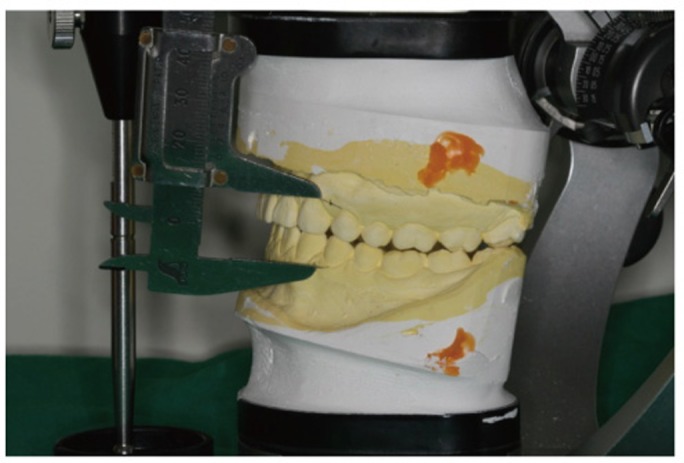
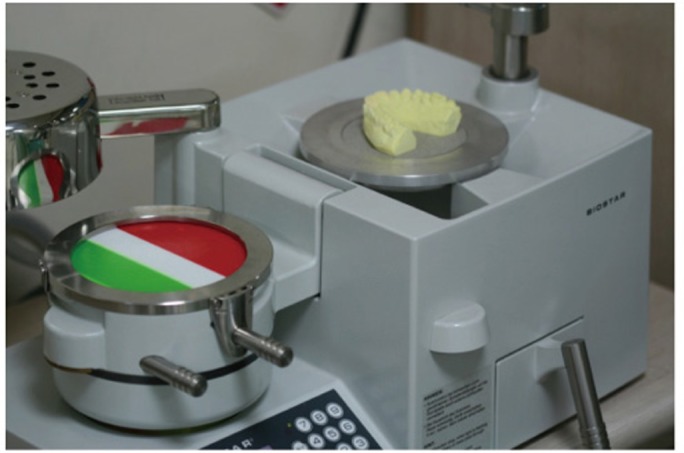
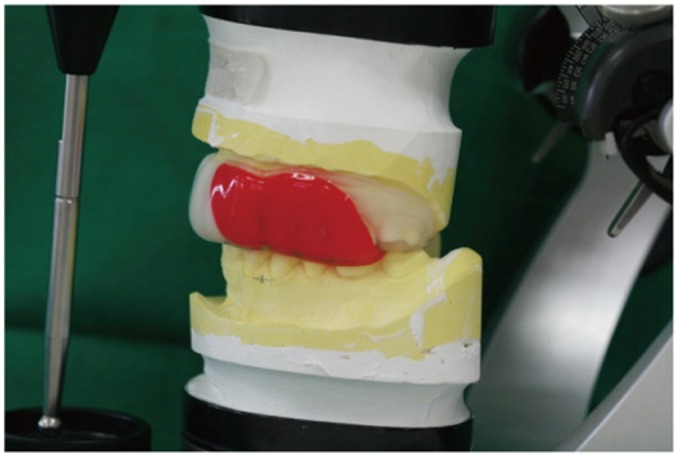

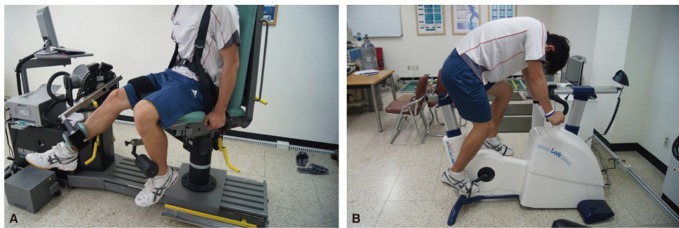



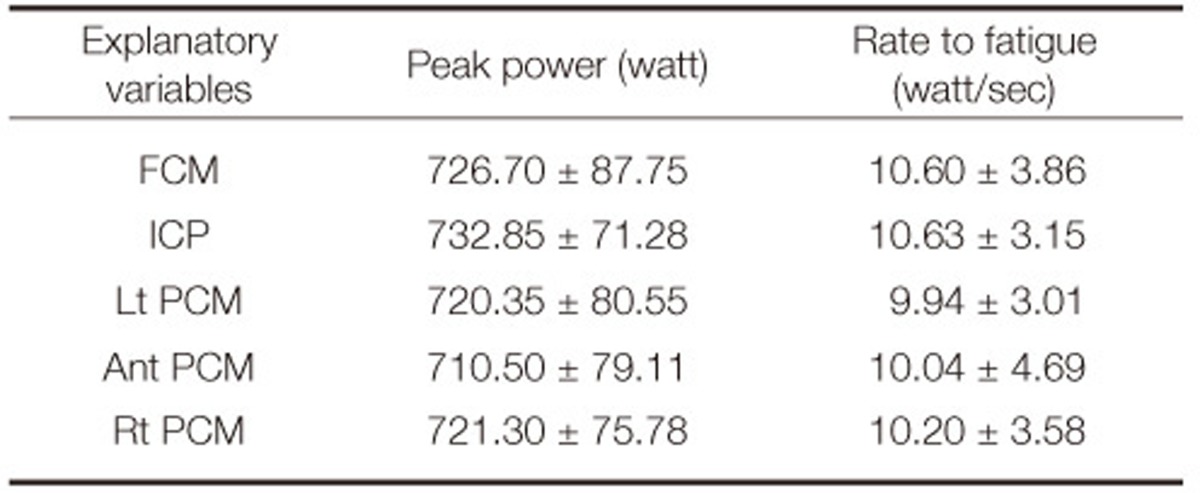
 XML Download
XML Download